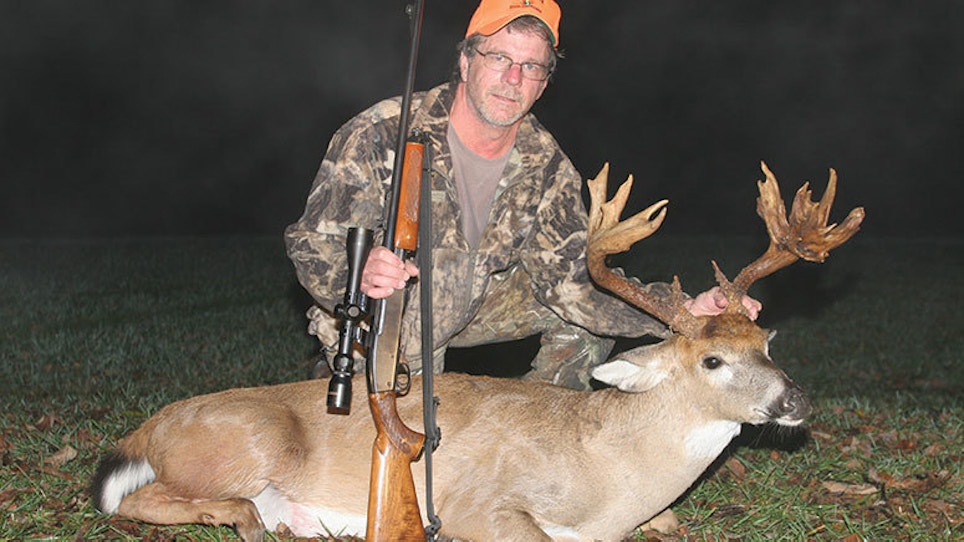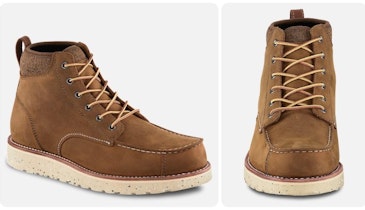He’s not the buck you’ve been waiting for. Not even close. Instead of the wide, heavy 10-pointer that’s been showing up on your trail camera, you are looking at a freak — but not in a good way. One antler is relatively normal, a curved main beam with three short tines. The other, however, rises above the ear and then bends sideways and down. A few stubby points jut from the main beam.
The buck in front of you is what many hunters consider the perfect “cull” buck. He needs to be removed from the herd so he doesn’t pass his genes on to future generations. Do you shoot? For many hunters, the answer is a resounding yes. Their goal is to create a landscape filled with genetically superior bucks, ones that carry a perfect set of wall-worthy antlers.
When It Works
First, the good news: You can create a herd filled with giant bucks by removing genetically inferior animals. It’s done on a regular basis with incredible results.
The bad news? It works only on deer farms, where breeders know the history of a buck’s genetics and where only specific males are allowed to breed with specific females. That’s exactly how deer farmers produce bucks with such freakishly large antlers.
“That’s the only time it works,” says Noble Foundation senior wildlife and fisheries consultant Michael Porter.
When It Doesn’t
Scientists have attempted to improve antler size through selective harvest on numerous occasions on free-range deer. Each time, they saw no noticeable difference.
“There are so many factors influencing deer physiology in free-range herds that it is simply impossible to influence the genetics,” says Porter. “Culling wild deer based on antlers just doesn’t work.”
The biggest question, agree Porter and researcher Dr. Charles DeYoung, is what exactly defines a “cull buck.” There are likely as many answers as there are hunters who believe some bucks need to be removed to improve the genetics.
These days, even biologists can’t agree on the definition of a cull buck. In fact, says Porter, the term is rarely used in the professional wildlife management arena anymore because the very concept of shooting certain bucks to improve the overall herd genetics has proven to be elusive. A spike is a cull to some hunters, and any buck with misshapen antlers is a cull to others. Some insist that any 3- or 4-year-old buck with mediocre antlers should be removed.
As studies have shown, even professional biologists had trouble determining what qualifies as a “cull” by looking at a buck. Porter recalls a study conducted by the Noble Foundation in southcentral Oklahoma that included more than 600 deer. The project ran for 24 years. Researchers trapped the animals and attached unique tags in both ears of every deer. They observed the animals throughout their lives through trap recaptures, spotlight surveys, field observation and trail cameras and recorded antler characteristics of each buck. They learned that some bucks, whether spikes, mediocre bucks or even ones with distorted or otherwise non-typical antlers, had the potential to blossom into what any deer hunter would consider a trophy. Others that seemed destined for the trophy books didn’t amount to much later in life.
The lesson? “It’s impossible to look at a buck and determine what it will look like in the future,” says Porter. “About half the bucks you see this year will be unrecognizable next year based on antler characteristics. Some will even go from a typical buck to a non-typical. The only way to accurately identify a free-range deer that isn’t tagged is if it has some sort of unique physical characteristic like a torn ear or an extra throat patch or something like that.”
Even if a buck can be identified throughout its life, it’s still difficult to know where that buck is in its life sequence. In other words, you can’t age a deer on the hoof.
“A lot of people think they can accurately age a deer down to the exact year just by looking at it, but there’s a lot of science that say you can’t. Even biologists who look at deer for a living have trouble aging a deer to the exact year,” notes Porter.
In other words, that thin-antlered 8-pointer that looks like a 3-year-old may actually be a 2- or 4-year-old. Give him a couple of years and he may be the wall-hanger you want him to be. Porter says some of the bucks observed in the lengthy study at the Noble Foundation didn’t reach their peak antler growth until they were 6 years or older.
The Free-Range Problem
Even if you shoot a buck that has no chance of growing your definition of an ideal rack, there’s a good chance it’s already passed on its genes. Various research has found that even yearling bucks will breed does. In fact, it’s now known that bucks of all age classes will breed a doe if she is a willing participant.
What’s more, bucks with substandard genetics will likely end up on your land no matter how many “cull” bucks you shoot. Yearling males disperse from their maternal home range, often traveling a mile or more before establishing their own home ranges. In some studies, some yearling bucks traveled 10 or more miles. Yearling does also disperse, but to a lesser extent.
If that’s not enough, the “good” bucks that you want to keep around may end up in your neighbor’s freezer. Unless you manage thousands of acres, many of the bucks on your land today can be on your neighbor’s tomorrow thanks to the rut. Bucks will make long excursions during the breeding season.
There’s no better proof than an extensive study conducted by DeYoung in southern Texas. Researchers with the Caesar Kleberg Wildlife Research Institute captured 2,129 different bucks over 7 years on a low-fence ranch. Bucks not meeting specific criteria were euthanized while those that did were released. One on area, yearlings with less than six points, 2-year-olds with less than eight points, 3- and 4-year-olds with eight points or less and bucks 5 years and over with antlers scoring less than 145 B&C inches were culled. All bucks over 2 years old were culled on another area and on a third area, all bucks were released. A total of 1,292 bucks were euthanized.
The result? The ranch had a lot fewer bucks. Buck-doe rations were drastically skewed on one study area. More important, there was no statistical improvement in antler quality in any of the research areas.
“We really don’t have any way of knowing which bucks have the ‘good’ genes to produce larger antlers and which ones don’t,” admits DeYoung. “Environmental conditions complicate culling efforts, because antler size and quality is a product of rainfall, nutrition and other factors we can’t control. You also have to remember that does contribute to the genetics of a fawn, too, and there’s no way to judge her genetic quality based on her appearance.”
A study using computer modeling of culling efforts on a free-range deer herd found similar results. It examined the results of simulated culling efforts of only bucks with the smallest antlers in the population. An average of 42 percent of the bucks were removed from the simulated site each year. After 20 years of selective harvest, there was no noticeable difference in antler size. The study’s authors noted that the computer model allowed for much more precise harvests than hunters would be capable of doing in a real-world situation.
What Really Matters
If you want to hunt a farm filled with perfect-racked, trophy-class deer, your best option is to spend the money to hunt an actual deer farm where high fences allow managers to grow nothing but giant bucks with carefully-engineered antler characteristics. In other words, you will never achieve your goal in a free-range deer herd, whether you hunt a sprawling southern Texas ranch or a 10-acre block of New York farmland. There are simply too many factors beyond your control.
The real secret to growing abundant quality deer is no secret. Wildlife managers and many hunters have known for years the single most important ingredient.
“Age,” says Porter. “Nutrition is a significant factor, as well, but a buck will never reach his full potential is he gets killed first.”
In other words, the simplest way to see more big deer is to stop shooting little deer. However, don’t expect every buck to have a perfectly-symmetrical set of antlers or a rack worthy of the record books.
Some bucks simply don’t have the genetics to achieve those features, but there’s nothing you can do to change that.






